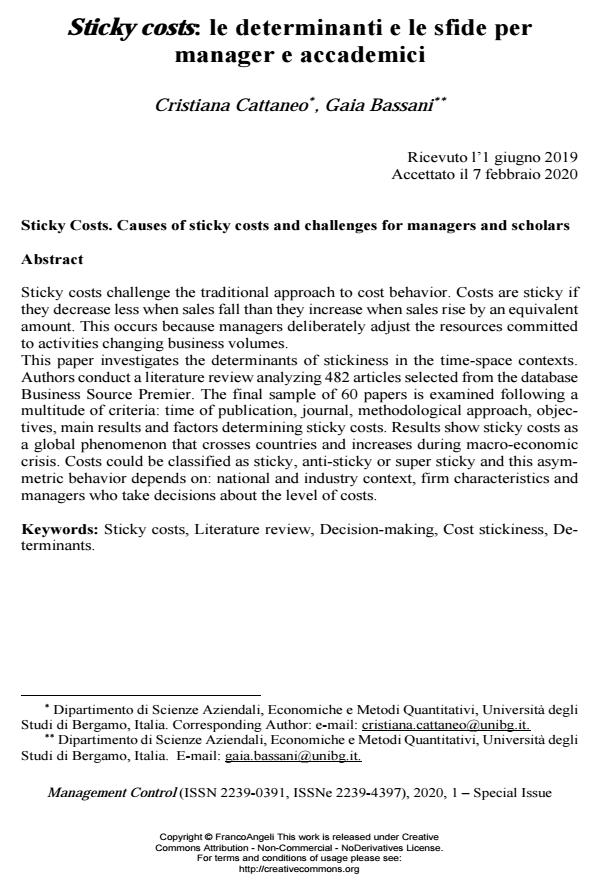Sticky costs: le determinanti e le sfide per manager e accademici
Journal title MANAGEMENT CONTROL
Author/s Cristiana Cattaneo, Gaia Bassani
Publishing Year 2020 Issue 2020/Suppl. 1
Language Italian Pages 24 P. 103-126 File size 343 KB
DOI 10.3280/MACO2020-001-S1007
DOI is like a bar code for intellectual property: to have more infomation
click here

FrancoAngeli is member of Publishers International Linking Association, Inc (PILA), a not-for-profit association which run the CrossRef service enabling links to and from online scholarly content.
Sticky costs challenge the traditional approach to cost behavior. Costs are sticky if they decrease less when sales fall than they increase when sales rise by an equiva-lent amount. This occurs because managers deliberately adjust the resources committed to activities changing business volumes. This paper investigates the determinants of stickiness in the time-space contexts. Authors conduct a literature review analyzing 482 articles selected from the data-base Business Source Premier. The final sample of 60 papers is examined follow-ing a multitude of criteria: time of publication, journal, methodological approach, objectives, main results and factors determining sticky costs. Results show sticky costs as a global phenomenon that crosses countries and increases during macro-economic crisis. Costs could be classified as sticky, anti-sticky or super sticky and this asymmetric behavior depends on: national and industry context, firm charac-teristics and managers who take decisions about the level of costs.
Keywords: Sticky costs, Literature review, Decision-making, Cost stickiness, De-terminants.
Cristiana Cattaneo, Gaia Bassani, Sticky costs: le determinanti e le sfide per manager e accademici in "MANAGEMENT CONTROL" Suppl. 1/2020, pp 103-126, DOI: 10.3280/MACO2020-001-S1007